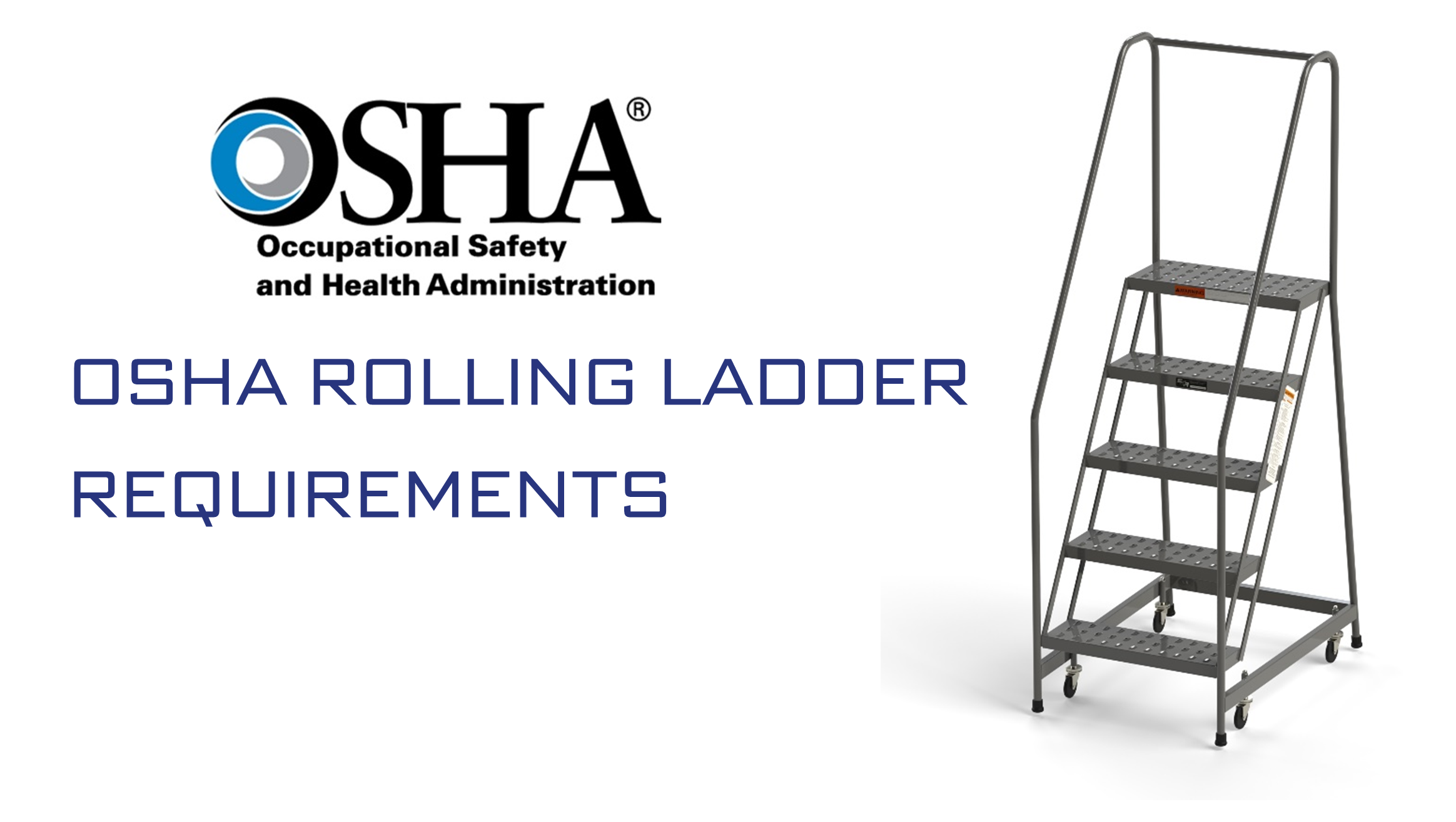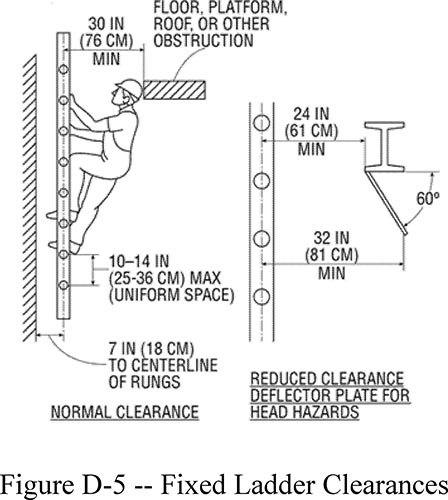Navigating OSHA portable ladder requirements is crucial for workplace safety. Understanding these rules prevents accidents and ensures compliance.
Portable ladders are common tools in many industries. Misuse can lead to serious injuries or fatalities. OSHA (Occupational Safety and Health Administration) sets strict guidelines to minimize risks. These regulations cover ladder design, usage, and maintenance. Workers and employers must know these requirements to maintain a safe environment.
Whether you use ladders occasionally or daily, this guide will help you understand OSHA’s standards. This knowledge keeps your workplace safe and compliant. Let’s explore the key aspects of OSHA’s portable ladder requirements.
Credit: www.erectastep.com
Introduction To Osha Ladder Regulations
The Occupational Safety and Health Administration (OSHA) sets strict rules for ladder use. These rules aim to keep workers safe. In this section, we will explore the basics of these regulations.
Purpose Of Safety Standards
Safety standards exist to prevent accidents. OSHA’s ladder rules help minimize risks. These regulations protect workers from falls and injuries. Following these rules can save lives.
Scope Of Guidelines
OSHA’s guidelines cover all types of portable ladders. This includes step ladders, extension ladders, and platform ladders. Each type has specific rules to follow.
The guidelines apply to all industries. Construction, manufacturing, and even office settings must comply. By understanding these rules, employers can create safer workplaces.

Credit: www.egaproducts.com
Types Of Portable Ladders
Portable ladders come in various types, each designed for specific tasks. Understanding the differences is crucial for safety and efficiency. Below, we will explore the two main types: Step Ladders and Extension Ladders.
Step Ladders
Step ladders are self-supporting and have flat steps. They are ideal for tasks that require a stable platform. These ladders come in different heights and materials such as aluminum or fiberglass.
| Feature | Description |
|---|---|
| Height | Ranges from 4 to 20 feet |
| Material | Aluminum, Fiberglass |
| Weight Capacity | Up to 300 pounds |
Usage tips:
- Ensure the spreaders are fully extended.
- Never stand on the top step.
- Place on a flat, stable surface.
Extension Ladders
Extension ladders are adjustable in length. They are perfect for tasks that require reaching high places, like painting or cleaning gutters. These ladders consist of two or more sections that can slide apart.
- Check the locking mechanisms before use.
- Always maintain three points of contact.
- Ensure the ladder is at the correct angle.
Key features:
- Height: Can extend up to 60 feet.
- Material: Typically made of aluminum or fiberglass.
- Weight Capacity: Supports up to 300 pounds.
Inspection And Maintenance
Ensuring the safety of portable ladders in the workplace is crucial. Regular inspection and maintenance of ladders help prevent accidents and injuries. This section covers the necessary steps for routine checks and repair protocols.
Routine Checks
Routine checks are essential to maintain ladder safety. Inspect ladders before each use. Look for visible damage, such as cracks or missing parts. Follow these steps for a thorough check:
- Check the rungs and steps for cracks or bends.
- Ensure the ladder feet are secure and in good condition.
- Verify all bolts and rivets are tight.
- Examine the ladder for any rust or corrosion.
- Make sure the spreaders and locking mechanisms work properly.
Document each inspection in a logbook. This practice helps track the condition of each ladder over time.
Repair Protocols
If a ladder fails inspection, remove it from service immediately. Follow these repair protocols:
- Identify and tag the damaged ladder. Use a “Do Not Use” tag.
- Report the damage to the maintenance team.
- Do not attempt temporary fixes. Only use manufacturer-approved parts for repairs.
- After repair, re-inspect the ladder to ensure it meets safety standards.
- Document the repair and inspection in the logbook.
Only trained personnel should perform repairs. This ensures the ladder is safe for future use.
| Checklist Item | Condition | Action |
|---|---|---|
| Rungs and Steps | Cracked/Bent | Repair/Replace |
| Ladder Feet | Loose/Worn | Secure/Replace |
| Bolts and Rivets | Loose | Tighten |
| Spreaders and Locks | Not Functioning | Repair/Replace |
Proper Usage Techniques
Using a portable ladder correctly can prevent many accidents. OSHA has specific guidelines to ensure safety. Following these techniques keeps you secure while working at heights.
Correct Setup
Place the ladder on a stable, level surface. Ensure the ground is firm. Avoid slippery or uneven areas. Secure the top of the ladder. Use a wall or sturdy object. Check for overhead hazards. Avoid power lines and low ceilings. Extend the ladder three feet above the landing point. This provides a handhold when stepping off. Maintain a 4-to-1 ratio. For every four feet of height, place the base one foot away from the wall. Ensure all locks are engaged. This prevents the ladder from collapsing.
Safe Climbing Practices
Face the ladder while climbing. Use both hands to grip the rungs. Do not carry tools in your hands. Use a tool belt or hoist line. Keep three points of contact at all times. Two hands and one foot, or two feet and one hand. Avoid sudden movements. Climb slowly and deliberately. Do not overreach. Keep your belt buckle between the side rails. Wear proper footwear. Non-slip shoes provide better grip.
Training And Education
Ensuring safety while using portable ladders is crucial. Proper training and education play a vital role. OSHA’s guidelines emphasize the need for comprehensive training programs. Workers must understand the risks and correct usage of ladders.
Employee Training Programs
Employee training programs are essential. They teach workers the correct ladder usage. These programs focus on recognizing ladder hazards. They also cover inspection and maintenance techniques. Regular training sessions keep safety knowledge fresh.
Educational Resources
Educational resources are available to reinforce training. OSHA provides various materials. These include manuals, videos, and online courses. Resources are designed to be user-friendly. They help workers understand ladder safety easily.
Workplaces should utilize these resources. They ensure continuous learning. Consistent education reduces accidents. It promotes a safer work environment.

Credit: www.osha.gov
Frequently Asked Questions
What Are Osha Requirements For Portable Ladders?
OSHA requires ladders to be stable and in good condition. They must support the intended load.
How Often Should Ladders Be Inspected?
Inspect ladders before each use. Look for defects like cracks, rust, or loose parts.
Can Ladders Be Painted According To Osha?
No, painting ladders can hide defects. OSHA recommends not painting ladders except for identification marks.
What Are The Weight Limits For Ladders?
Ladders must support at least four times the maximum intended load. Check the manufacturer’s label for specifics.
Conclusion
Proper ladder use ensures workplace safety. Understanding OSHA requirements is crucial. Always inspect ladders before use. Ensure they are on stable ground. Follow weight limits to prevent accidents. Train employees on ladder safety. Store ladders properly to avoid damage. By adhering to these guidelines, you can maintain a safe work environment.
Prioritize safety and reduce risks. Implement these practices today. Your workplace will be safer and more efficient.
Recent Posts
Maintaining clean gutters is essential for preventing water damage to your home, and choosing the best ladder for cleaning gutters can make the job much easier and safer. With so many options on the...
Best Ladder for Cleaning Caravan Roof: Top Picks for You Every Adventure!
Today we will discuss the best ladder for cleaning caravan roof. Cleaning caravan roofs is one of the crucial tasks.After many days, a caravan roof can get dirty by debris, dirt, and grime. These can...
